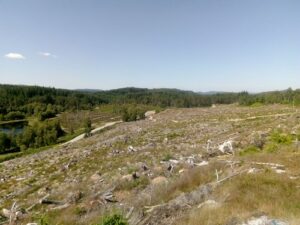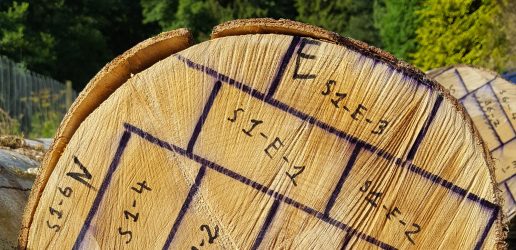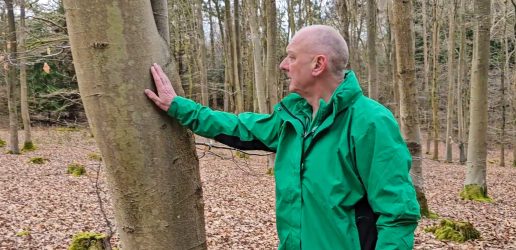Thousands of trees planted near Loch Ness could help grow a new income stream for Scotland’s forestry industry while removing thousands of tonnes of carbon from the atmosphere.
The trees comprise a large-scale test site investigation by Natural Environment Research Council (NERC)-funded scientists from the University of Edinburgh in collaboration with Forest Research, Britain’s principal organisation for forestry and tree-related research.

Over the next four years, the scientists will be monitoring the site to find out how biochar, a charcoal-like substance made from forestry residue, performs as a fertiliser, nutrient sponge and soil carbon addition.
The team believes biochar could be a green bullet for forestry and the wider environment, with the potential to generate income while improving soils, reducing residue and storing carbon.
Initial results have already been positive.
Mike Perks from Forest Research said: “Forestry is a nationally important industry, but in Scotland it is concentrated on upland, nutrient-poor soils where new trees can be slow to establish.
“Every year, wood processing produces about a million tonnes of phosphorus-rich byproduct that could be used to make biochar instead of being sold as low-value mulch for horticulture.
“Biochar could help soil carbon recover faster, improve planting success, reduce the need for additional fertiliser during forest establishment and add value to the industry as an additional product.
“If a business model can be developed, this represents a huge opportunity for Scotland’s £2 billion timber processing industry.”
Hamish Creber, the NERC-funded PhD student overseeing the test site said: “Over the next four years we’ll be monitoring biochar’s performance, by measuring tree establishment success, growth and tree health.
“Our initial results indicate that seedlings grown in soil with biochar are more effective at capturing and using light, which is an indicator for overall tree health.”
Dr Saran Sohi, leader of the UK Biochar Research Centre at the University of Edinburgh, said: “Biochar has a range of benefits for the environment. As well containing nutrients like phosphorus, it contains a high proportion of highly-stable carbon.
“This carbon remains sequestered in biochar for centuries, so its sustainable production could be a powerful tool in the fight against climate change.”
Forestry is not the only industry in Scotland that could benefit from biochar.
Dr Sohi said: “Biochar can be made from almost any type of dry biomass, including waste materials. So it could be an enormous opportunity for ‘closed-loop’ type resource management, with numerous valuable benefits.”
The test site run by the University of Edinburgh and Forest Research is part of a wider NERC-funded project, Soils Research to deliver Greenhouse Gas Removals and Abatement Technologies (Soils-R-GGREAT), which is harnessing the best expertise in the UK on soils and biochar to provide a comprehensive global assessment of soil-based greenhouse gas removal.

Forest Research, in partnership with Edinburgh Napier University, have taken a first step in systematically assessing the timber potential of underutilised species in the UK.
Tree professionals working in arboriculture are being asked to take part in a new tree health survey as part of a DEFRA-funded project looking at pathways and practices concerning the tree disease, canker stain of plane.

Nature, the world’s leading multidisciplinary science journal, has published findings from a new global study investigating which tree species fix the most carbon.

Forest Research, in partnership with Edinburgh Napier University, have taken a first step in systematically assessing the timber potential of underutilised species in the UK.
Tree professionals working in arboriculture are being asked to take part in a new tree health survey as part of a DEFRA-funded project looking at pathways and practices concerning the tree disease, canker stain of plane.

Nature, the world’s leading multidisciplinary science journal, has published findings from a new global study investigating which tree species fix the most carbon.